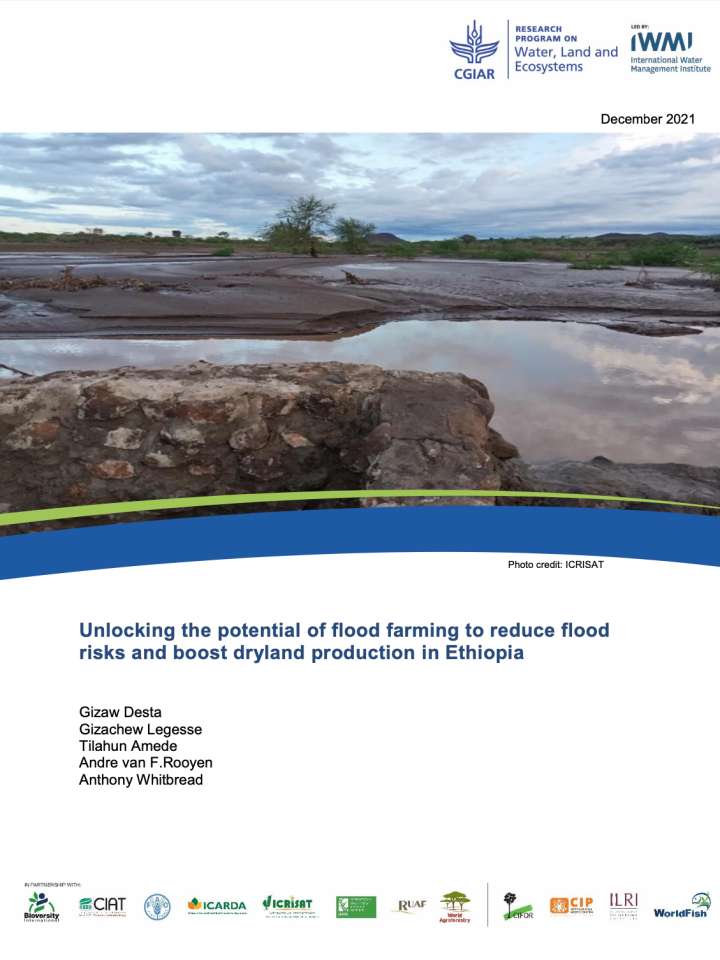Unlocking the potential of flood farming to reduce flood risks and boost dryland production in Ethiopia
This paper assesses the potential of unlocking flood farming to reduce flood risks and boost dryland production in Ethiopia. Ethiopia is experiencing extreme weather variability with some areas being vulnerable to drought, while others are impacted by flooding. Despite being given relatively less attention as compared to drought, flooding has long been recognized as one of the major disasters affecting the lives and livelihoods of the people. Flood disaster has been limited in the past in terms of frequency and scope. The recent trend of increasing incidents of floods in Ethiopia is disrupting the livelihoods of the population residing in the lowlands.
The paper concludes with the following key messages:
- Flood risk management should be responded by formulating an integrated approach embedded in the context of integrated water resources management and land use planning.
- Realizing the potential of flood farming implies a shift from a project-oriented approach to a process-oriented holistic approach based on the inclusion of stakeholders and communities in the process.
- Special emphasis should be placed on conducting pilot projects with a particular view to flash floods.
- The National Flood Response Plan aims to provide preparedness and emergency precautionary measures and develop an emergency response to flood-affected people with the coordinated effort of multiple stakeholders.
Explore further
